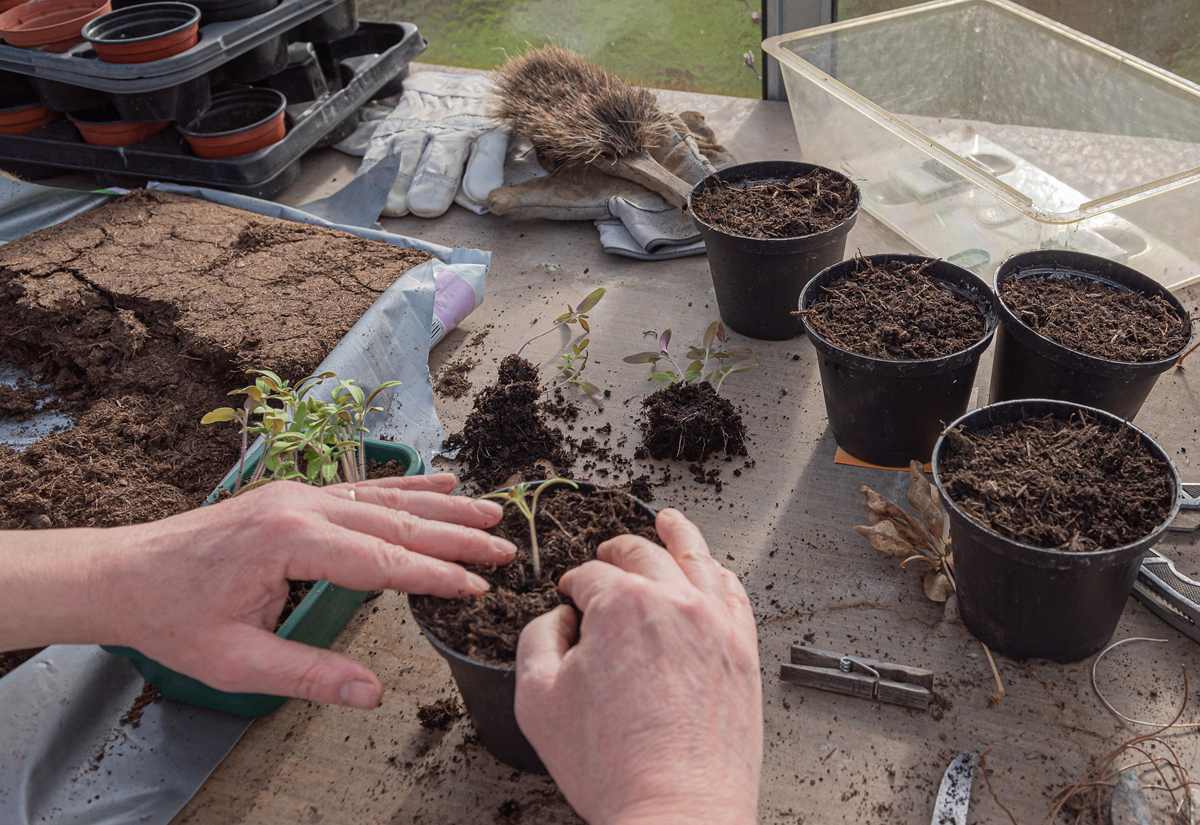The following sowing and transplanting methods are available to the amateur gardener who wants to grow tomatoes outside without the use of a greenhouse.
Tomato seeds can be sowed directly into a seed bed. However, this is by far the riskiest method in temperate climates. It is only suitable for those areas which have a last frost date in MARCH. In all other areas, the soil is unlikely to be warm enough at a time which will allow the tomato plant to develop and fruit. The soil temperature must be at least 15C (60F) at the time of sowing and during germination. It is possible to utilize a cloche or cold frame. This will warm the soil prior to planting and protect the plants in their early stages.
Using a trowel, dig a shallow drill 2.5cm deep (1in) deep in the prepared bed. Place two seeds every nine inches in the drill and cover the seeds to a depth of 2.5cm (1in). Water well if the conditions are at all dry.
The seedlings should emerge in about 10 days. When they are 5cm (2in) tall, thin to one plant every 45 to 60cm (18 to24in).
Sowing tomato seeds indoors is one of the commonest methods and produces good results. Sow each seed (two if you have a surplus) in a 7.5cm (3in) pot, lightly covering them with potting compost. Ensure the compost is moist but not waterlogged. Place them in a warm (up to 27C or 80F) draught free place – the seedlings should emerge in 7 to 10 days time.
Immediately this happens, move the plants to a light position (a light windowsill is ideal), but out of direct sunlight to avoid burning the leaves. Where more than one seed has been sown per pot, thin out the least healthy seedling as soon as they are large enough to handle. When the roots start to come through the base of the pot (about 4 weeks after sowing), transfer the plants to larger 12.5cm (5in) pots. The plants will be large enough to transplant outside about 7 weeks after sowing the seed.
Sowing tomato seeds outdoors in pots is similar to sowing the seed indoors in pots with the exception that the pots are stored outside whilst the seed germinates. The advantage over indoor sowing is that space is not a limiting factor to the amount of plants to be raised.
Timing and position of the plants are the key factors to success. Keep the pots in the warmest part of the garden (against a house wall is ideal) to hasten germination and subsequent growth. The use of cloches will assist greatly in retaining heat. Timing is the most difficult aspect of this method – keeping the plants under cloches and or against a house wall will raise the temperature and permit earlier growing, but it is not an exact science. The basic rules of no frost and a minimum soil temperature of 15C (60F) must be achieved.
One combination which can work well is to sow the seeds inside (where they do not have to be in a light position) and the transfer them outside when the seedlings emerge.
Just before transplanting the tomato plants to their final position drive a strong stake into the ground 5cm (2in) from the planting position. The stake should be at least 30cm (1ft) deep in the ground and 1.2m (4ft) above ground level – the further into the ground the better the support.
Where tomato seedlings have been started in pots, they should be transplanted into their final positions when they are about 15cm (6in) high. Two to three weeks prior to this, the plants should be hardened off.
For each plant, dig a hole (45cm / 18in apart) in the bed to the same depth as the pot and water if conditions are at all dry. Ease the plant out of the pot, keeping the root ball undisturbed as far as possible. Place it in the hole and fill around the plant with soil. The soil should be a little higher than it was in the pot.
Loosely tie the plant’s stem to the support stake using soft garden twine – allow some slack for future growth.
The Author:
squidoo.com
